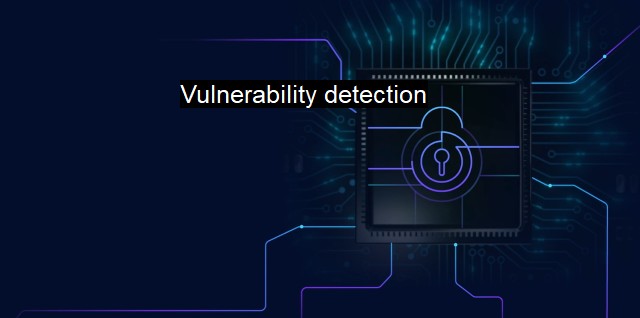What is Vulnerability detection?
The Importance of Vulnerability Detection for Cybersecurity: Identifying Weaknesses in Networks to Protect Against Advanced Threats"
Vulnerability detection is a pivotal facet profoundly integrated within the broader context of cybersecurity and antivirus mechanisms. It refers to the exercise of identifying and classifying vulnerabilities, typically within computer systems, networks, or software applications. This proves vital in preempting the damaging impacts of a potential cyber-attack, ensuring robust data security, and promoting a healthy digital environment.In-depth understanding of how vulnerabilities work and anticipation of possible attack patterns form the backbone of cybersecurity defense strategies. every point of vulnerability represents an opportunity for ill-motivated explorers to gain unauthorized access to sensitive data, with the intention to disturb, dismantle, or destruct. Hence, vulnerability detection is not just a common practice carried out by protection software such as antiviruses and anti-malware, but is also an integral component of IT auditing, security management, and risk assessment.
Vulnerabilities are dangers that stem from weakness within the information system decried as flaws or faults in hardware or software, identifiable security bugs, or ineffective configuration settings. They leave doors ajar for potential security hazards. Identifying these vulnerabilities involves an intricate process decorated with several stages of inspection. Foremost, it requires scoping the system or network, distinguishing live hosts and mapping the networks, pinpointing systems and services, and extensively examining the results. Notably, this process's outcomes provide constructive feedback that fundamentally feeds and informs cybersecurity strategies.
Antivirus software contributes to vulnerability detection by examining the stored files, scanning them for known viruses or threats. They harness algorithms to forecast threats from identified patterns, hence exploiting the existent vulnerability structures. Consequently, antivirus software is competent at isolating, warning, and exterminating these threats before they blossom into full-fledged and possibly irreparable vulnerabilities.
Fastidious vigilance on the current and potential system vulnerabilities helps organizations establish a durable groundwork for eminent security safeguards. Detecting vulnerabilities—and correcting them in due time—provides leeway for maintaining integrity, preserving confidentiality, and safeguarding essential data. Thus, fending off disruptive procedures like unauthorized data alterations, system or network interruption, or data erosion that follow closely with successful cyber coordination.
It is worth noting, though, that vulnerability detection is not only focused on locating personalized weaknesses; it's also about visiting the lustfully overlooked niches of defunct patch levels, out-of-date software versions, or additional applications, that hackers might exploit to craft their misgivings. organization networks, systems, or digital platforms aren’t perfect—they come with natural openings and applications that operate under faulty configurations, which, if left unattended, stand out as susceptible attack vectors for malicious users.
Although cyber vulnerabilities could solely stem from technical shortcomings or oversights such as improper configuration or unauthorized access points, these weak spots could also arise consequent to the human aspect of cybersecurity. This includes careless employee behavior on-site or via remote access, failure to use complex passwords, or abandoning terminals unprotected. Thus, a well-crafted vulnerability-detection strategy accounts for not only system functionalities but also addresses the human considerations villainously heightening cyber vulnerabilities.
In recent times of spanking interconnected data and services, and following an escalating trend towards digitization allowed by the advent of technologies such as cloud computing, machine learning, and IoT, vulnerability detection has risen to serve a larger purpose—that of securing an expansive digital presence against determined and evolved cybersecurity attacks.
The keystones of a potent cybersecurity stratagem, vulnerability detection and timely management have become integral business attributes for their influential role in risk management, data protection, and ultimately sustaining operational continuity. A strong defense requires not just monitoring but also incessant attention to vulnerabilities and the readiness to replicate corrective locutions promptly. And hence, vulnerability detection holds an essential position within the practices that collectively entertain cybersecurity and antivirus realms.

Vulnerability detection FAQs
What is vulnerability detection?
Vulnerability detection is the process of identifying and reporting vulnerabilities or weaknesses in a software, a network, or a system that can be exploited by hackers to execute cyberattacks. The main goal of vulnerability detection is to allow organizations to take corrective actions to reduce the risk of cyber threats.How does vulnerability detection work?
Vulnerability detection uses different techniques such as scanning, testing, and analysis to detect vulnerabilities in a system. The process involves checking for outdated software, known vulnerabilities, and misconfigurations. Vulnerability scanners and penetration testing tools are commonly used to identify and assess the risk of vulnerabilities.Why is vulnerability detection important?
Vulnerability detection is important because it helps organizations to proactively identify and eliminate security weaknesses in their systems, reducing the risk of security breaches and data loss. By detecting vulnerabilities, organizations can take measures to fix the problems, patch security holes, and update software or firmware. This improves the overall security posture of the organization and protects against cyber attacks.What are some common types of vulnerabilities that vulnerability detection can identify?
Vulnerability detection can identify various types of vulnerabilities, such as software vulnerabilities, network vulnerabilities, configuration vulnerabilities, and human vulnerabilities. Some examples include unpatched software, weak passwords, misconfigured firewalls, and social engineering attacks. Vulnerability detection can also detect zero-day vulnerabilities, which are unknown vulnerabilities that can be used by attackers to exploit systems.| | A | | | B | | | C | | | D | | | E | | | F | | | G | | | H | | | I | | | J | | | K | | | L | | | M | |
| | N | | | O | | | P | | | Q | | | R | | | S | | | T | | | U | | | V | | | W | | | X | | | Y | | | Z | |
| | 1 | | | 2 | | | 3 | | | 4 | | | 7 | | | 8 | | |||||||